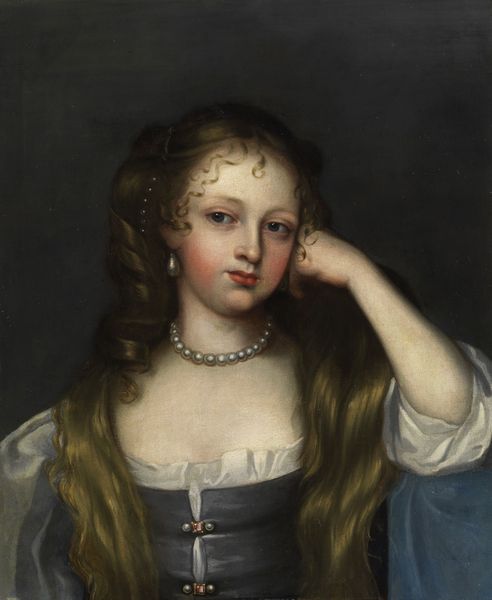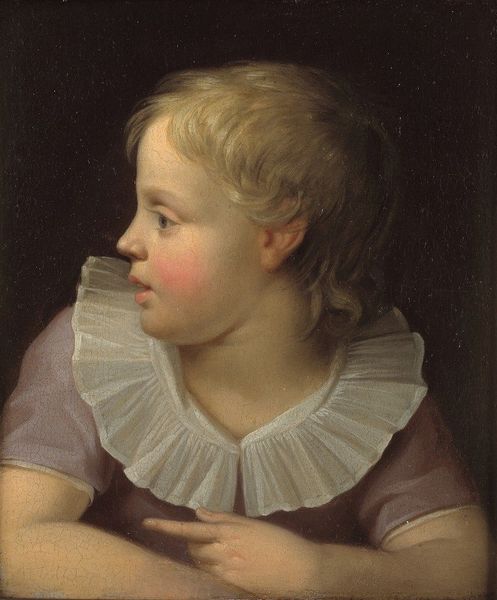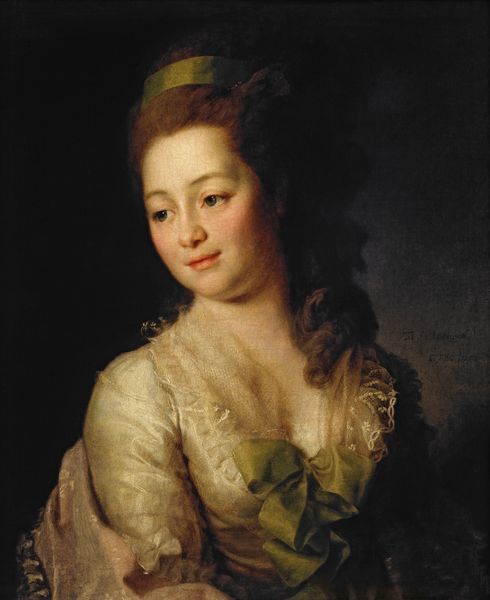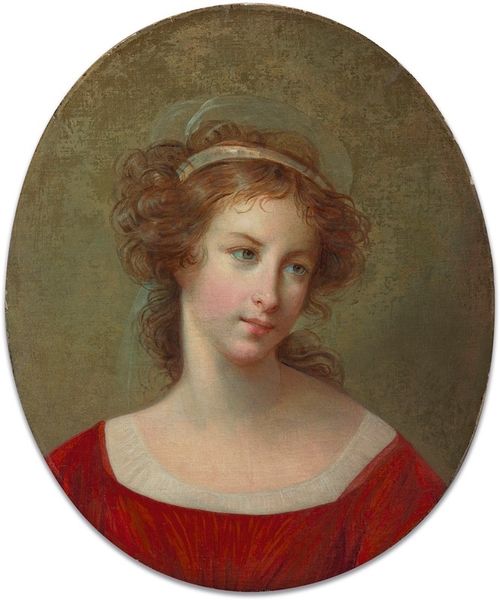
painting, oil-paint
#
portrait
#
painting
#
oil-paint
#
figuration
#
genre-painting
#
realism
#
rococo
Copyright: Public domain
Curator: Before us we have "A Girl" by Jean-Baptiste Greuze. Painted in oil, it embodies the Rococo style, a moment where artists aimed to capture intimacy. What is your first take? Editor: There's such a tenderness in the subject's gaze. She looks almost reverent. Is this an attempt to paint childhood innocence, a symbolic purity that echoes other depictions of female children across history? Curator: Greuze's pieces depicting young women, painted around the late 18th century, often invite heated debates about the socio-political dynamics of the period. Are these genuine portrayals, or were they also objects of projection shaped by prevailing social norms? Editor: Perhaps, it’s both. If we dig into the symbolism: she wears a very modest blue ribbon holding her hair in place, contrasting with her dress. What kind of meanings would audiences project on that at the time? Curator: Exactly, a simple blue ribbon could simultaneously signal chastity and, perhaps paradoxically, burgeoning maturity. Considering the societal expectations placed upon young women, her gaze takes on a unique tension. Was Greuze highlighting the limited autonomy women had at that moment in time? Editor: You're pointing at how context profoundly affects what we see. Consider her bare shoulders: depending on what the symbolic and aesthetic norms of that society were, it could read innocent, playful, or suggestive, which obviously informs any modern viewer's reading of this portrait. Curator: In Greuze’s world, did such seemingly harmless depictions uphold or challenge social constraints? Perhaps Greuze walked a fine line, catering to and subverting expectations. And her gaze invites speculation; does she look at the future with naive hope or quiet trepidation? Editor: This takes me back to the first question: is this is childhood, innocence, something being lost? Regardless of the intentions or what was "really" there, this portrait encapsulates all the power of how cultures mark and observe stages in the development of women. Curator: Beautifully put. This artwork's power lies not just in its aesthetics but also in its ability to provoke self-reflection. It invites viewers to question their assumptions and preconceptions when facing representations of young women, then and now. Editor: Absolutely. Ultimately, decoding the meanings imbued in such an image prompts conversations across temporal and cultural divides, prompting ongoing dialogue, reflection and critical discussion about how and why images are made.
Comments
No comments
Be the first to comment and join the conversation on the ultimate creative platform.













